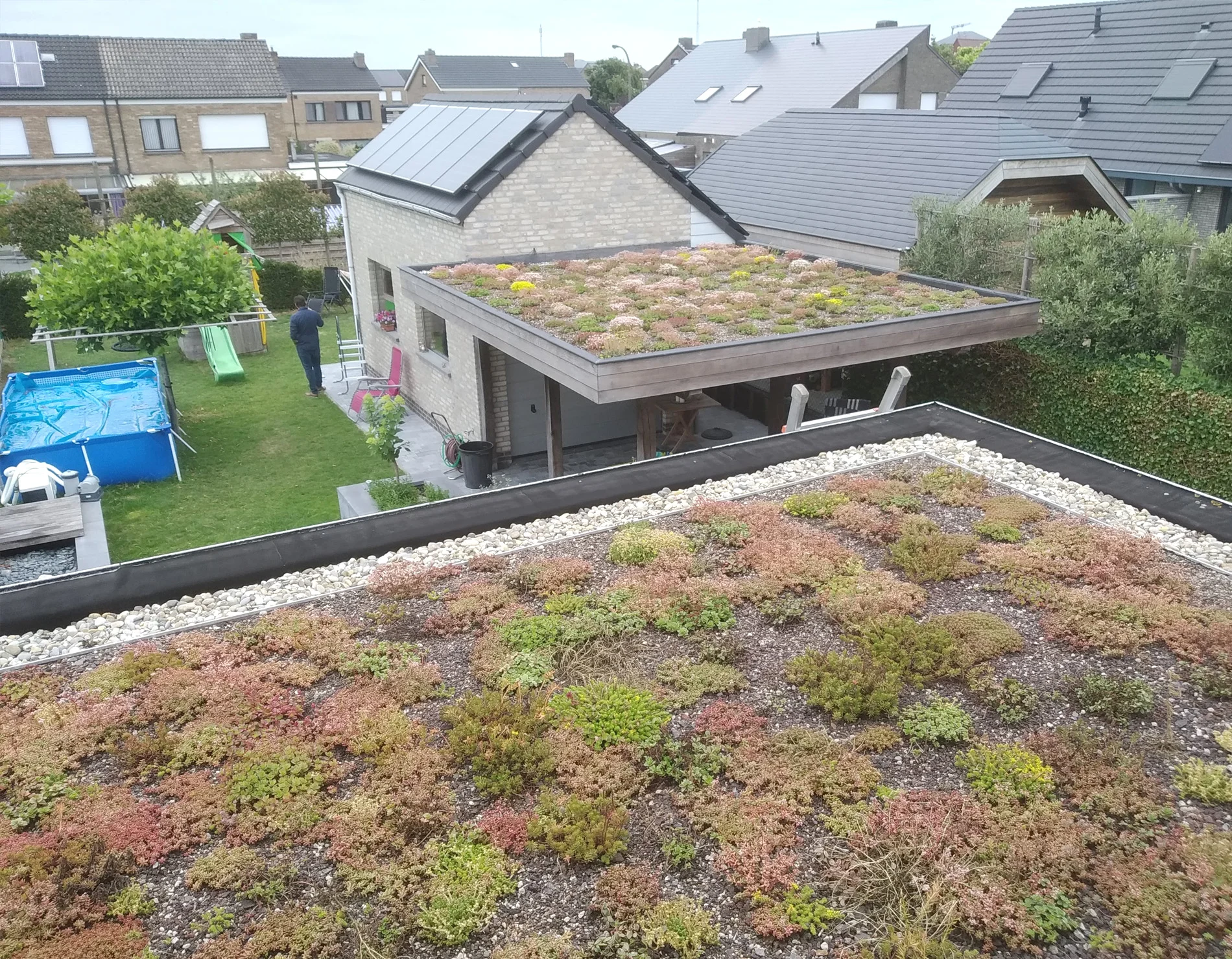Introduction
The good news is that green roofs are almost always possible, whether you have a flat or pitched roof. But, there are some important factors to consider to ensure your green roof is successful and sustainable.
We give a brief overview of what you need to know.
Load-bearing capacity of the roof
A green roof can be heavy, especially when fully saturated with water. The roof must be strong enough to bear this extra weight without risking structural damage.
Don't have a clue about this? Get a structural engineer to assess the load-bearing capacity of your roof and to ensure that the roof can support the weight of the green roof, including the plants, substrate, and water.
Waterproof
A 100% waterproof roof is crucial because a green roof retains a lot of moisture, which can cause leaks if the waterproofing is not good. Both roofing and EPDM are suitable for a green roof.
If you have doubts about waterproofing, you can always carry out a waterproofing test by flooding the roof surface with water for a certain period of time and checking for leaks.
Plant choice
Sufficient light is important for most plants on a green roof, as it is needed for photosynthesis and healthy growth. However, a green roof is also possible in shady conditions. By choosing shade-loving plants such as ferns and mosses, and using lightweight roof materials and good drainage, we can create a successful and attractive green roof even with less direct sunlight.
There is no reason not to opt for a green roof. With the right attention to bearing capacity, waterproofing, accessibility and plant choice, any roof - whether flat or sloping - can be transformed into a beautiful and sustainable green roof.

